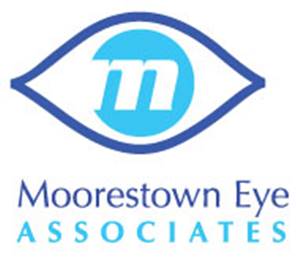We partner with Kremer Eye Center in Cherry Hill to provide the best in refractive surgery options. Dr. Les Friedman and 2 of our staff members even had LASIK there themselves! Who better to guide you through the LASIK process than someone that had it himself? To find out if you are a candidate for LASIK or other refractive procedures, make an appointment with us today!
What is LASIK?
Laser Assisted In Situ Keratomileusis is a surgical procedure in which a laser is used to reshape the cornea. Your Kremer eye surgeon will create a corneal flap, then use a cool Excimer laser to reshape the underlying tissue. The flap will then be put back in place, allowing for a quick and relatively painless visual recovery for most patients.
Am I a candidate for LASIK surgery?
If you need glasses or contacts to correct nearsightedness, farsightedness, or astigmatism, you may be a candidate for surgery. Even people who have had cataract surgery or corneal transplants may be candidates for LASIK.
What kind of results can I expect?
Typically, you will see an immediate improvement in your eyesight. LASIK’s objective is to produce vision of 20/40 or better without glasses or contacts. Your vision may be somewhat hazy for several days following the surgery. Most patients’ eyes stabilize within 4–6 weeks of the surgery. Some patients may require a second procedure known as an enhancement. The need for an enhancement may be caused by several factors including high degrees of refractive error or the simple fact that each patient’s corneal cells will absorb the lasers energy slightly differently.
Will I be awake during my LASIK surgery?
A mild sedative and anesthetic drops are administered before surgery. You will be fully conscious, yet relaxed, throughout the procedure.
What happens during the recovery period?
 Your eyes will be covered with protective shields until the next day. These shields have pinholes that permit sight while protecting against foreign objects entering your eyes. Your eyes may feel scratchy and may tear up for about two hours after surgery.
Your eyes will be covered with protective shields until the next day. These shields have pinholes that permit sight while protecting against foreign objects entering your eyes. Your eyes may feel scratchy and may tear up for about two hours after surgery.
For the first week, you’ll wear the flexible shields at night to make sure you don’t accidentally rub your eyes while you sleep. You’ll take eye drops for the first four days after surgery. One prescription is an antibiotic and the other controls inflammation.
Many patients are able to return to normal activities one or two days after LASIK, but every patient is different, so be prepared for a longer recovery and keep your schedule flexible.
How soon will my eyes stabilize?
Most patients can resume most activities within 1-2 days of the procedure. The eyes tend to further stabilize over the next 3 months and in some cases over a longer period. During this extended period usually you can work, drive, and carry on with most daily activities.
Will I need glasses after the LASIK procedure?
Most people who are older than 40-45 will probably need reading glasses for close work, just as they would if they were wearing contact lenses. (They would wear bifocals if they wear regular glasses.) Others may require glasses for some activities such as driving at night. Some patients may still require glasses or contact lenses.
Does LASIK surgery cause night blindness?
Some patients have reported seeing halos around lights at night immediately following surgery. In 99% of patients, the halos either disappear or become small enough that they are not a problem within a few months. In a survey completed in 1997 and audited by the Food and Drug Administration (FDA), Kremer Eye Center determined that this condition was reported in about 1% of patients.
Does LASIK surgery cause dry eyes?
Patients who had borderline or symptomatic dry eyes when wearing contact lenses may find that the condition continues after LASIK surgery, but in most cases it can be treated with artificial tear eye drops and, in some cases, occlusion of the tear drainage ducts. At Kremer Eye Center, we perform pre-operative testing to determine the potential of dry eye after LASIK, and proceed appropriately.
What do we know about long-term effects of LASIK?
Our founder, Dr. Frederic Kremer, performed the first LASIK surgery in North America in 1993. His patients report lasting improvement in their vision. Although LASIK is a relatively new procedure, it is actually a refinement of a procedure performed since the 1950?s; keratomileusis, in which tissue was removed from under the cornea’s surface by mechanical means instead of a laser. Patients who had the original procedure in the 1950s have reported no detrimental long-term effects. Dr. Kremer first performed keratomileusis in 1982.
Does insurance cover the procedure?
Some insurance companies cover the procedure, although most do not. Check with your insurance provider. Kremer Eye Center offers affordable payment plans to bring the benefits of LASIK surgery within the reach of almost anyone. We also offer group benefits programs through companies, unions and associations.
What is the difference between LASIK and PRK (photorefractive keratectomy)?
Both procedures use a laser to correct nearsightedness, farsightedness, and astigmatism, and the results are very similar. In the LASIK procedure, the corneal surface cells are hinged to one side and the laser is applied to the underlying corneal tissue. During the PRK procedure, the corneal surface cells are discarded, so healing takes longer and there is a more gradual improvement in vision. Kremer Eye Center performs both procedures and will recommend the right procedure for each patient.
How does the WAVEfront custom LASIK procedure work?
Waves of light are passed through the eye, measuring minute irregularities. As the waves exit the eye, a computer compares them to an ideal “WAVEfront,” which equals “perfect” vision. The difference is calculated and a personalized 3D map of the exact pattern needed for vision correction is programmed and used to guide the laser when it reshapes the eye.The best way to determine your candidacy and which procedure is best for you is to come to one of our centers for a free screening.
What are the benefits of having the WAVEfront custom LASIK surgery?
LASIK has proven to be a safe and effective procedure. WAVEfront technology takes LASIK to the next level of visual success by offering greater potential for perfect vision for some patients. Our surgeons believe that all patients benefit from this technology.
What is IntraLase bladeless LASIK technology?
IntraLase® is the first all-laser technique for making the corneal flap during step one of the LASIK procedure. Instead of using the traditional microkeratome blade, the surgeon uses an IntraLase infrared beam to precisely create a micro-thin flap on the cornea of exact diameter, depth, hinge location, and centration. The focused laser pulses divide tissue at the molecular level, without transferring heat or impacting the surrounding area. The result is a safe and personalized corneal flap.
The consistent accuracy of IntraLase technology can make LASIK an option for patients who previously were not candidates, such as those with thin corneas or high prescriptions.

Click here to see which Saturdays we are open.